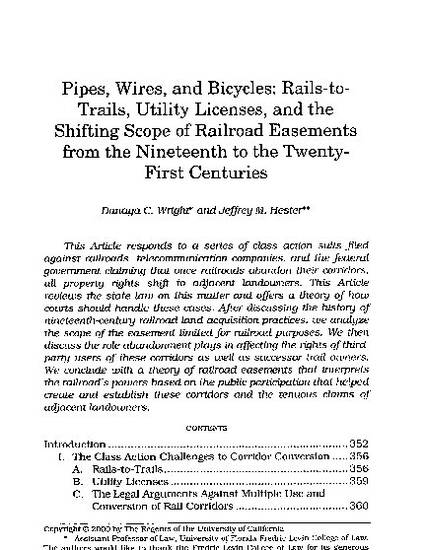
This Article responds to a series of class action suits filed against railroads, telecommunication companies, and the federal government claiming that once railroads abandon their corridors, all property rights shift to adjacent landowners. This Article reviews the state law on this matter and offers a theory of how courts should handle these cases. After discussing the history of nineteenth-century railroad land acquisition practices, we analyze the scope of the easement limited for railroad purposes. We then discuss the role abandonment plays in affecting the rights of third party users of these corridors as well as successor trail owners. We conclude with a theory of railroad easements that interprets the railroad's powers based on the public participation that helped create and establish these corridors and the tenuous claims of adjacent landowners.
